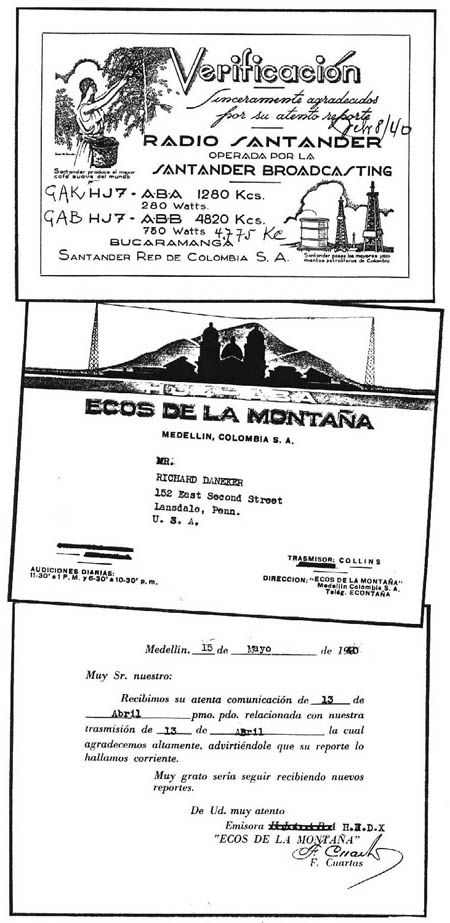

| 1993 - Jan. | Feb. | Mar. | Apr. | May | June | July | Aug. | Sept. | Oct. | Nov. | Dec. | CPRV Page |
 |
November 1993 The Latin American broadcasting scene was as pleasantly chaotic in the 1930's and 40's as it has been in the years since. From the October 19S6 edition of RADEX magazine: "In the larger European and American countries the major part of broadcasting is done on the regular broadcast band and shortwave broadcasting Is more or less a secondary venture. In Germany, England, the Netherlands, France, etc., the short wave stations serve widespread dominions or possessions and persons domiciled away from their homeland. Thus just a few high powered transmitters using beam antennae answer the purpose. In Latin America, on the other hand, broadcasting In some of the countries Is nearly impossible on the regular [medium wave] frequencies because of heavy static prevalent most of the time in the tropics. Shortwaves have to be resorted to and, in these countries, the s.w. broadcasters are more or less local in nature. While two transmitters working on eight or ten different frequencies at various times of the day are sufficient to serve the British Empire, small communities In Colombia, Venezuela, Haiti or the Dominican Republic require two or three or even more stations to fulfill their requirements for local broadcasting. Furthermore . . . to the south of us broadcasting was, and is, a private enterprise and in many cases the transmitters were home-made outfits." |